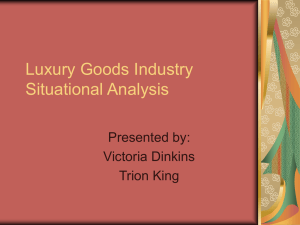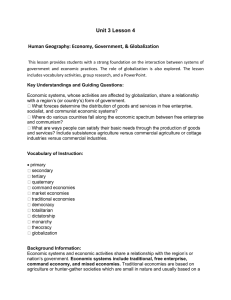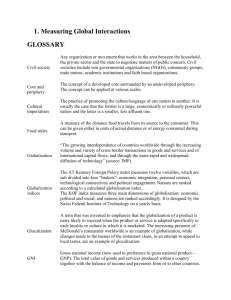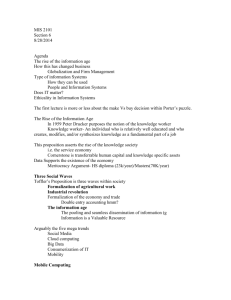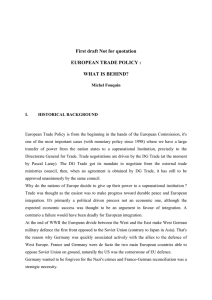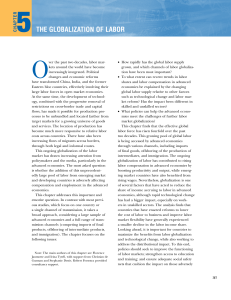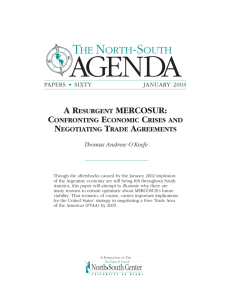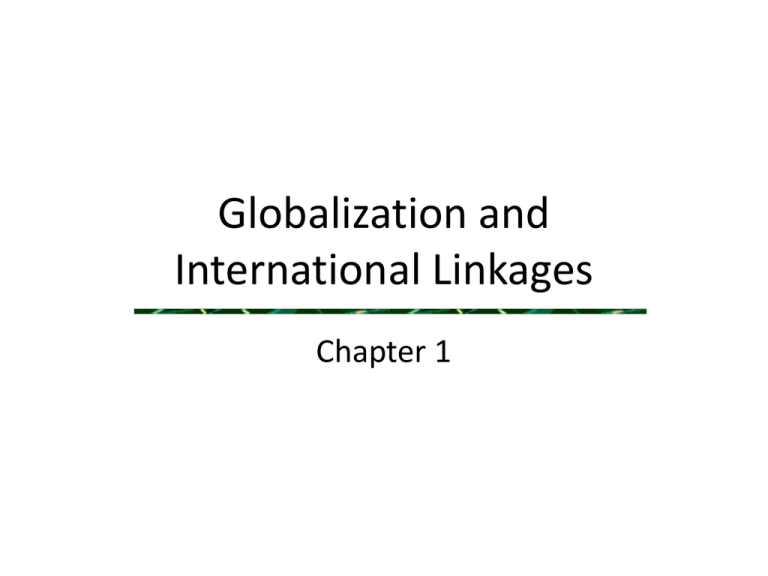
Globalization and
International Linkages
Chapter 1
Course Outline
The Global
Environment
of Business
Culture
in Global
Business
Global
Strategic
Management
Organizational
Behavior and
Global Human
Resources
Management
The Global Environment of
Business
• Chapter 1: Globalization and international
linkages
• Chapter 2: The political, legal, and technological
environment of business
• Chapter 3: Ethics and social responsibility
Chapter 1 Outline
• International business and management
• Globalization
–
–
–
–
–
Outsourcing and offshoring
Advantages and disadvantages
The World Trade Organization
Regional trade blocs
The shifting balance of economic power
Chapter 1 Outline (2)
• Regional economic issues
–
–
–
–
–
–
Japan
China
Other economies in East Asia
India
Russia
South America
International Management
• The process of
– applying management concepts and techniques in a
multinational environment and
– adapting management practices to different
economic, political, and cultural environments
McGraw-Hill/Irwin
© 2006 The McGraw-Hill Companies, Inc. All rights reserved.
International Business Activity
Exporting and Importing
• Exporting: selling products made in one’s own country
for use or resale in other countries
• Importing: buying products made in other countries for
use or resale in one’s own country
1-7
International Business Activity (2)
International Investments
• Foreign direct investment: the investor has control, or
shares control, in the management of the asset
– Home country: the country in which the parent company's
headquarters is located
– Host country: any other country in which the company does
business
• Portfolio investment: the purchase of financial assets,
such as stocks and bonds, issued by companies outside
your own country
1-8
Firms Involved in International Business
• Multinational corporations (MNC's)
– Operations in more than one country
– International sales
– Nationality mix of managers and owners
• Small and medium-sized enterprises (SME's)
McGraw-Hill/Irwin
© 2006 The McGraw-Hill Companies, Inc. All rights reserved.
Globalization of Business
• Globalization of business functions
–
–
–
–
–
Marketing
Manufacturing and service operations
Finance
Purchasing and supplier networks
Business process outsourcing: call centers,
technical service, financial research
• Global business environment with global
competition
Outsourcing and Offshoring
• Outsourcing is contracting to buy goods or
services that your company produced in the
past. When the work is done outside your own
country, offshore outsourcing occurs.
• Offshoring means performing business activities
outside the country where the resulting goods or
services are sold.
Stages in Economic Development
• Advanced economies are post-industrial countries
characterized by high per-capita income, highly
competitive industries, well-developed commercial
infrastructure, and a large service sector.
• Developing economies are low-income countries
characterized by limited industrialization and stagnant
economies, with little economic growth.
• Emerging markets are former developing economies that
have achieved substantial industrialization,
modernization, and rapid economic growth
International Business: Strategy,
Management, and the New Realities
Trade Definitions
• A tariff is a tax on an imported good.
• A subsidy is a government payment to producers
of certain products.
– Farm products are often subsidized.
World Trade Organization (WTO)
• 153 member countries
– Russia is not a member.
• Oversees regulations for
–
–
–
–
international trade in goods and services
international investment
protection of intellectual property
settling trade and investment disputes between
countries
World Trade Organization (2)
• Developing countries can charge higher tariffs
and impose more restrictions on investment than
developed countries
• Developing countries want the WTO to change
its rules so that they will be more competitive in
the global economy.
– The biggest issue is subsidies that developed
countries pay to their own farmers to encourage crop
production.
North American Free Trade
Agreement (NAFTA)
• Free trade agreement among Canada, United States,
and Mexico
– Free trade agreement means that there are no tariffs on
goods traded among member countries
– This provision applies only to goods that were produced in
one of the 3 countries
• Most restrictions on foreign investment among the 3
countries have been abolished.
• Firms in member countries can compete for
government contracts.
NAFTA (2)
• Financial services firms can do business in all 3
countries.
• There is a dispute resolution procedure.
• Each country agreed to enforce its own laws
related to
–
–
–
–
Environmental protection
Child labor
Minimum wages
Workplace safety
Free Trade Agreements in Central
and South America and the Caribbean
10-18
Other Free Trade Areas
in the Americas
• Mercosur – includes Brazil, the largest economy
in South America
• The Andean Community
• The Caribbean Community (CARICOM)
• Central American Common Market
• Tariffs are imposed on U. S. goods exported to
Mercosur, the Andean Community, and
CARICOM
10-19
Other Free Trade Areas
in the Americas (2)
• ALADI is a free trade area among
– Mercosur
– The Andean Community
– Mexico, Chile, and Cuba
• CAFTA-DR is a free trade agreement among the
United States, the Central American Common
Market, and the Dominican Republic
• A proposed Free Trade Area of the Americas has
made little progress
European Union (EU) Before 2004 Enlargement
Candidate Countries
• Turkey
• Croatia
• Macedonia
The European Union Today
The European Union (EU)
• Almost 500 million people
• 27 member countries
• 2006 Gross Domestic Product (GDP) was
about 13.5 trillion dollars
– Slightly higher than U. S. GDP
• 16 EU members use the euro currency
– The European Central Bank manages the euro
currency (similar to the Federal Reserve Bank in the
United States)
The European Union
A Single Market
• Free trade in goods and services among
member countries
• Common tariffs on goods imported from
outside the EU
• Common (minimum) product standards CE mark is required to sell many goods
• Business is subject to many regulations
• The EU Commission settles trade disputes
among EU members.
Rights of EU Citizens
• EU citizens have a right to live and work in any
EU country
• These rights take effect 7 years after a country
joins the EU
– 2011 for countries that joined in 2004
– 2014 for Bulgaria and Romania
• Individual countries can choose to grant
residency and work rights sooner.
The Shifting Balance
of World Economic Power
• For about 20 years, 55 – 60% of global imports and
exports have come from four areas: the United States,
the EU, Japan, and China
• The BRIC countries – Brazil, Russia, India, and China –
are expected to be among the fastest growing
economies for the next 20 – 40 years
– To continue rapid growth, Russia must make its
economy less dependent on oil and gas.
• China, India, Brazil, and several Arab countries are
increasing their foreign direct investment.

